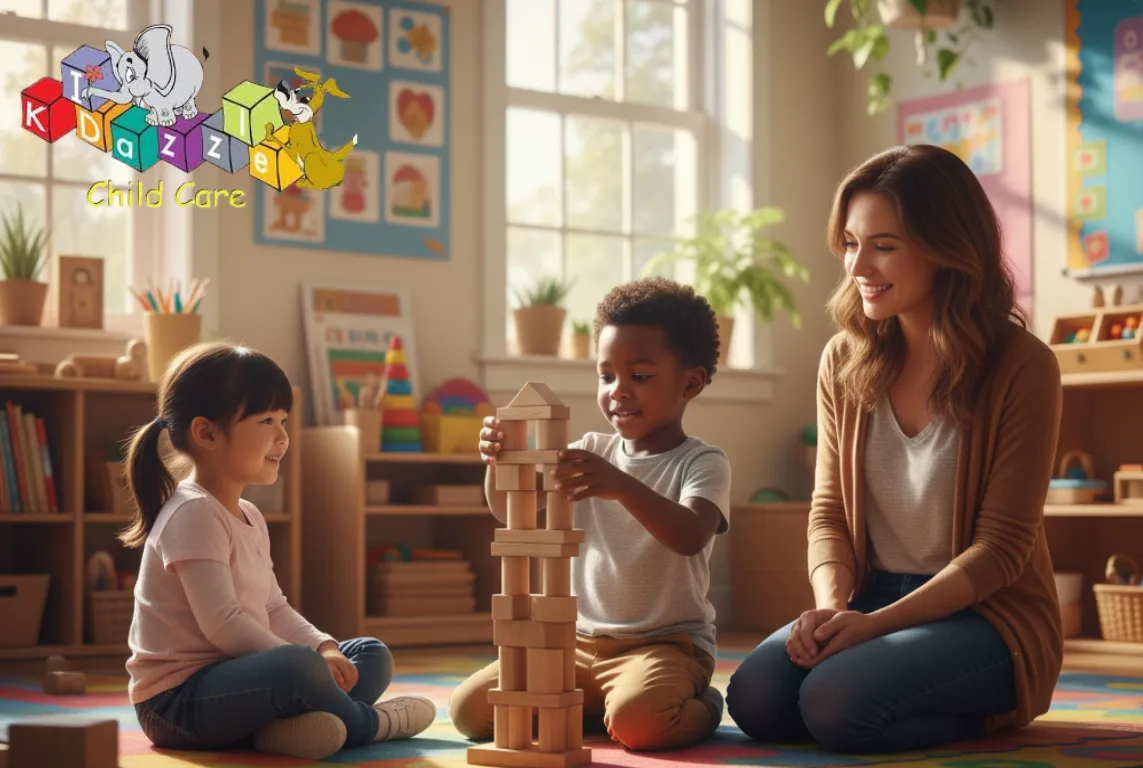
The Art of Patience: Helping Children Manage Frustration and Build Resilience

The Art of Patience: Helping Children Manage Frustration and Build Resilience
Patience doesn’t come naturally — it’s learned, practiced, and modeled.
At Kidazzle Childcare, we know that helping children manage frustration is one of the most valuable lessons we can teach.
Because before children can tie their shoes, solve a puzzle, or make a new friend, they must first learn the quiet art of waiting — and trying again.
Why Patience Matters in Early Childhood
In today’s fast-paced world, even adults struggle with patience. For young children, the ability to wait, cope, and try again is a key part of emotional growth.
Patience teaches children how to:
Manage frustration and disappointment
Develop problem-solving and persistence
Strengthen emotional control
Build confidence through progress
When a child learns to take a deep breath instead of giving up, they’re building more than self-control — they’re building resilience.
The Science Behind Patience and Resilience
Resilience — the ability to recover from challenges — grows through small moments of practice.
When a child faces something difficult, like a tricky puzzle or a long turn in line, the brain builds pathways that strengthen emotional regulation and executive function (the part responsible for focus, decision-making, and self-control).
That’s why at Kidazzle, we turn daily frustrations into learning moments.
A child waiting for their turn with a toy learns fairness.
A child rebuilding a fallen block tower learns persistence.
A child calming down after tears learns inner strength.
Every “try again” is a seed for future success.
How Kidazzle Teaches Patience Every Day
Our teachers model calm, supportive behavior and gently guide children through moments of frustration with empathy and encouragement.
Here’s how patience takes shape in our classrooms:
Mindful Moments: We practice breathing together before transitions.
Problem-Solving Play: Teachers ask, “What can we try differently?” instead of providing the answer.
Group Games: Activities that involve taking turns build natural patience.
Reflective Conversations: After challenging moments, children are encouraged to express how they felt and what helped them feel better.
Through these experiences, children learn that frustration isn’t failure — it’s part of learning.
How Parents Can Nurture Patience at Home
Parents play the biggest role in helping children learn patience. Here are small ways to make it part of everyday life:
Model calm reactions. When things go wrong, show how to pause and breathe before responding.
Acknowledge feelings. “I know waiting is hard, but you’re doing a great job being patient.”
Create slow moments. Cook together, garden, or build something — let your child experience process, not just results.
Praise effort. “You kept trying even when it was tough — that’s what strong kids do!”
Related reading: Raising Little Leaders: How Early Confidence Builds Future Success
Community That Encourages Growth
At Kidazzle, we remind families that patience doesn’t grow in isolation — it grows in community.
Our centers partner with neighborhoods full of local businesses that teach the same values of consistency, care, and teamwork.
Whether it’s a family restaurant that takes time to prepare a homemade meal, or a local gym where kids practice discipline through movement — patience is part of every healthy community.
Read more: It Takes a Village: How Local Businesses Support Families
The Kidazzle Difference: Calm, Confident Learners
At Kidazzle, we teach patience through connection — guiding children to feel capable, resilient, and proud of their progress.
When children learn to slow down, breathe, and try again, they don’t just grow smarter — they grow stronger.
📍 Visit your nearest Kidazzle location to see how we help children turn frustration into focus, and challenges into confidence.